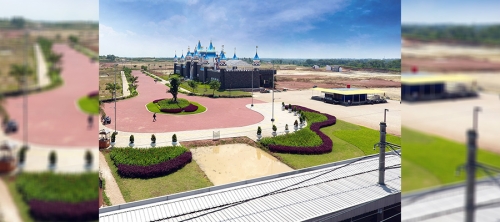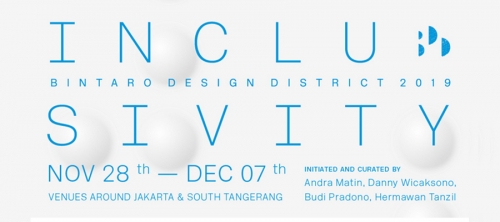 Administrator
Administrator
Affordable housing need not be boring cookie-cutter buildings.
At least that is what architect Hj Abdul Halim Suhor is setting out to prove with this Rumah Selangorku (RSKU) project—part of the Selangor government’s affordable housing programme.
It is sited on 14.4 acres within the Selangor Cyber Valley—a 1,300-acre planned ‘smart city’ by Perbadanan Kemajuan Negeri Selangor (PKNS), the state’s development corporation that developed this subsidised housing project.
Comprising 864 units of 1,000-square-foot apartments—priced RM220,000 and below—with facilities such as kindergarten, convenience shop, multipurpose hall and surau, this RSKU project has several design and building distinctions that set it in a class of its own.
WIDE-ANGLED BLOCKS
First off, the project is designed as two multi-storey apartment blocks with three wings each—forming three-sided stars with central lift cores.
“It is more common to lay out the blocks at the site boundaries, but ours is different—we wanted to pull everything to the centre,” Abdul Halim tells Construction+. “This lends a sense of depth of perspective, instead of one big wall.”
This atypical star-shape not only provides a multi-faceted façade, but also offers residents better views of the surroundings. At the same time, with the wide-angled wings, the entrance of each unit does not directly face the opposite unit, giving residents more privacy.
The blocks’ orientation takes the sun path into consideration, reducing the amount of sunlight that hits the building. With open circulation around each wing, the unobstructed wind flow helps to pull the internal heat out from the units. The building itself acts as a wind collector, increasing the wind velocity at the building’s core.
“When we are building almost 900 units within a 14.4-acre site, we have to compact everything,” says Abdul Halim. “But you want people to live there comfortably, so there has to be good ventilation, otherwise it will be very stuffy.”
To prevent the dark and muggy air wells common in many affordable high-rise projects, the slabs between the ground and first floor of the blocks have been split to create voids, producing a stack effect that allows hot air to rise by natural ventilation. The ground floor also has a 4.2-metre-high ceiling, giving ample clearance for airflow in the common areas.
Apart from the lift core at the centre of each ‘star’, which has two lifts, there are also lifts at the end of each wing to promote vertical circulation. Hence, the 32 units on each floor are served by five elevators—no small luxury.
“This is just a RSKU, but we try to put in some small details to make it worth living in, rather than just building something that fits the budget but is not liveable,” says Abdul Halim.
CENTRALISED PARKING
About half of the 2,117 parking bays are housed within a four-storey carpark building, located between the two apartment blocks. The carpark is designed in split levels to avoid long ramps for the comfort of users.
Having a standalone carpark allows for more versatility and efficiency in the design of the apartment blocks. For example, the units’ entrances can be shifted easily without having to align with the carpark structure below.
Covered motorcycle parking is located at the ground floor of one of the apartment wings for convenience and to avoid bikes being parked indiscriminately around the compound.
MAINTENANCE-FRIENDLY
“The building lives longer than us,” Abdul Halim adds. “If you don’t factor in maintenance in the design, the building will end up dilapidated.”
One of the key maintenance-centric design features is the large centralised gutter that runs between the butterfly, or V, roofs of the apartment blocks. Easily accessible, the gutter is wide enough for people to walk on it for easy cleaning.
“In Malaysia, it rains all year round, and gutters can get blocked or stuck,” says Abdul Halim. “If the gutter overhangs from the 15th storey, how are you going to clean it up? You cannot see if it’s stuck; you only find out when there is a problem. If you don’t solve the water problem, the whole floor will be affected.”
The units’ dry yards are also screened off with concrete walls with vertical slots for ventilation, instead of metal railings that may get rusty or break.
READY, SET, INSTALL
The project is also one of the first RSKU buildings constructed using a robotic industrialised building system (IBS) technology.
The wall panels, floor slabs, bathroom trays and even staircases are prefabricated using Gamuda Bhd’s digital IBS for easy installation. Grooves for piping, electrical conduits and power points, as well as decorative features, are cast into the panels, designed using building information modelling (BIM).
The use of IBS contributes to a smaller and more manageable workforce and a quieter and neater site with less construction waste. Every morning, some 200 workers will assemble for a ‘toolbox meeting’ where they are reminded on safety procedures as there is a lot of heavy lifting involved. The site was recently awarded the municipal council’s TABAS certificate for safe and clean work sites.
Foundation works began in January 2018—with some 3,000 piling points—while the IBS panels were produced concurrently. By March 2018, the manufactured structure components started to be delivered and stored close to site, ready for installation. A quality laboratory with on-site testing equipment helped to cut down turnaround time for tests to ensure consistent quality at all times.
Assembly of the structure components began in November 2018—at a rate of two-and-a-half floors a month—and is expected to be completed by middle of 2019. The straight and smooth wall panels do not require plastering before painting. The entire project is expected to be completed in 24 months, one year ahead of contractual schedule.
No doubt, this RSKU is raising the bar of affordable housing in Malaysia with its innovative designs and building technologies.
Source : Construction+
 Tips and Trik Memaksimalkan Lahan Taman Belakang
Tips and Trik Memaksimalkan Lahan Taman Belakang
Sama seperti taman di depan rumah, fungsi taman belakang adalah sebagai lahan resapan air.
 Modernland Optimis Hunian Rumah Sederhana dan Real Estat di Tahap Ketiga Ini Akan Kembali Disambut Baik Oleh Masyarakat
Modernland Optimis Hunian Rumah Sederhana dan Real Estat di Tahap Ketiga Ini Akan Kembali Disambut Baik Oleh Masyarakat
Pengembang Modernland Realty kembali memasarkan tahap ketiga dari proyek Kota Baru Modernland Cilejit di Tangerang.
 “Berbagi Masa Depan” Thema Bintaro Design District 2020
“Berbagi Masa Depan” Thema Bintaro Design District 2020
Pameran arsitek dan design Bintaro Design District telah selesai dilaksanakan selama sepuluh hari yaitu dari 28 November 2019 – 07 Desember 2019





